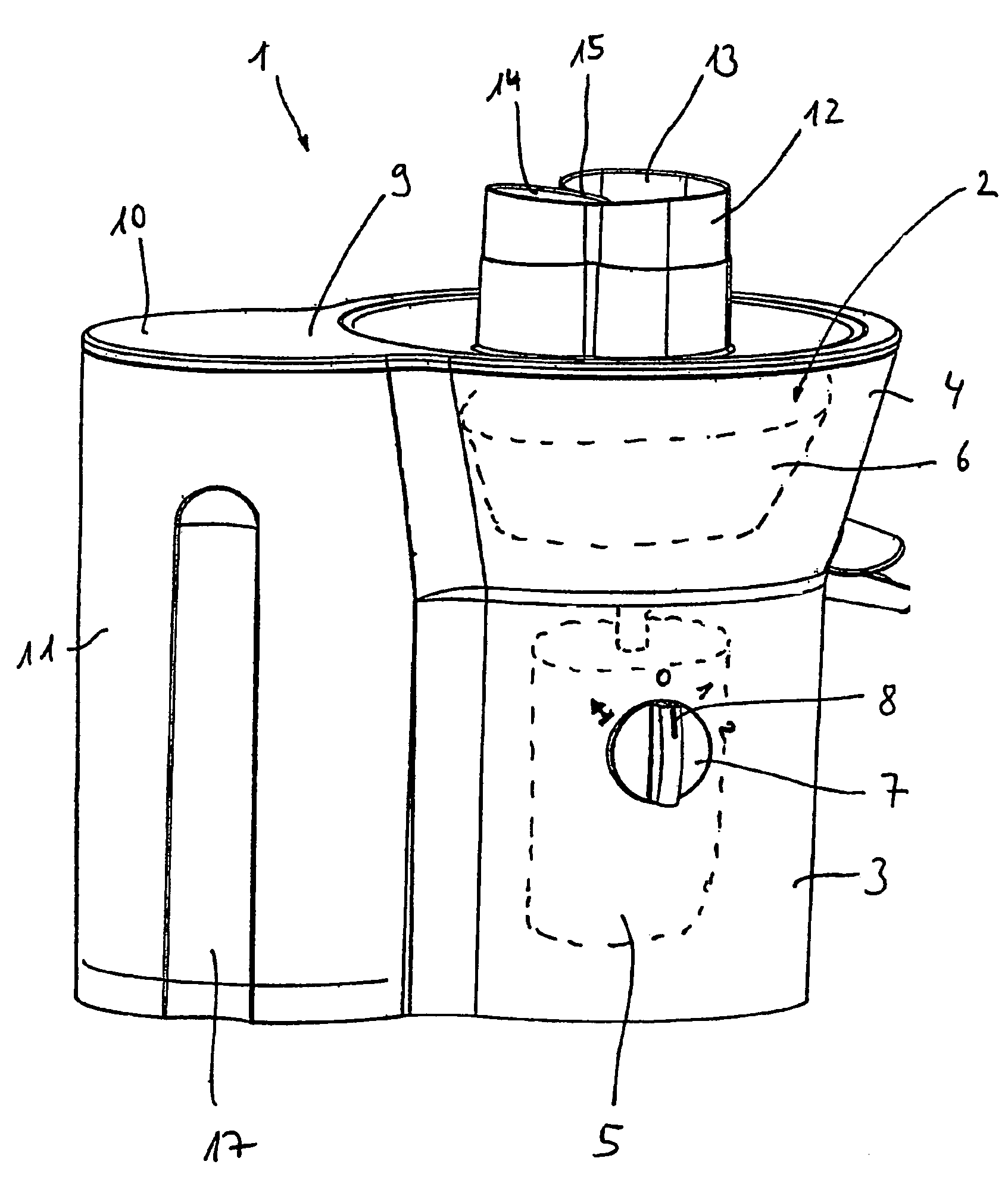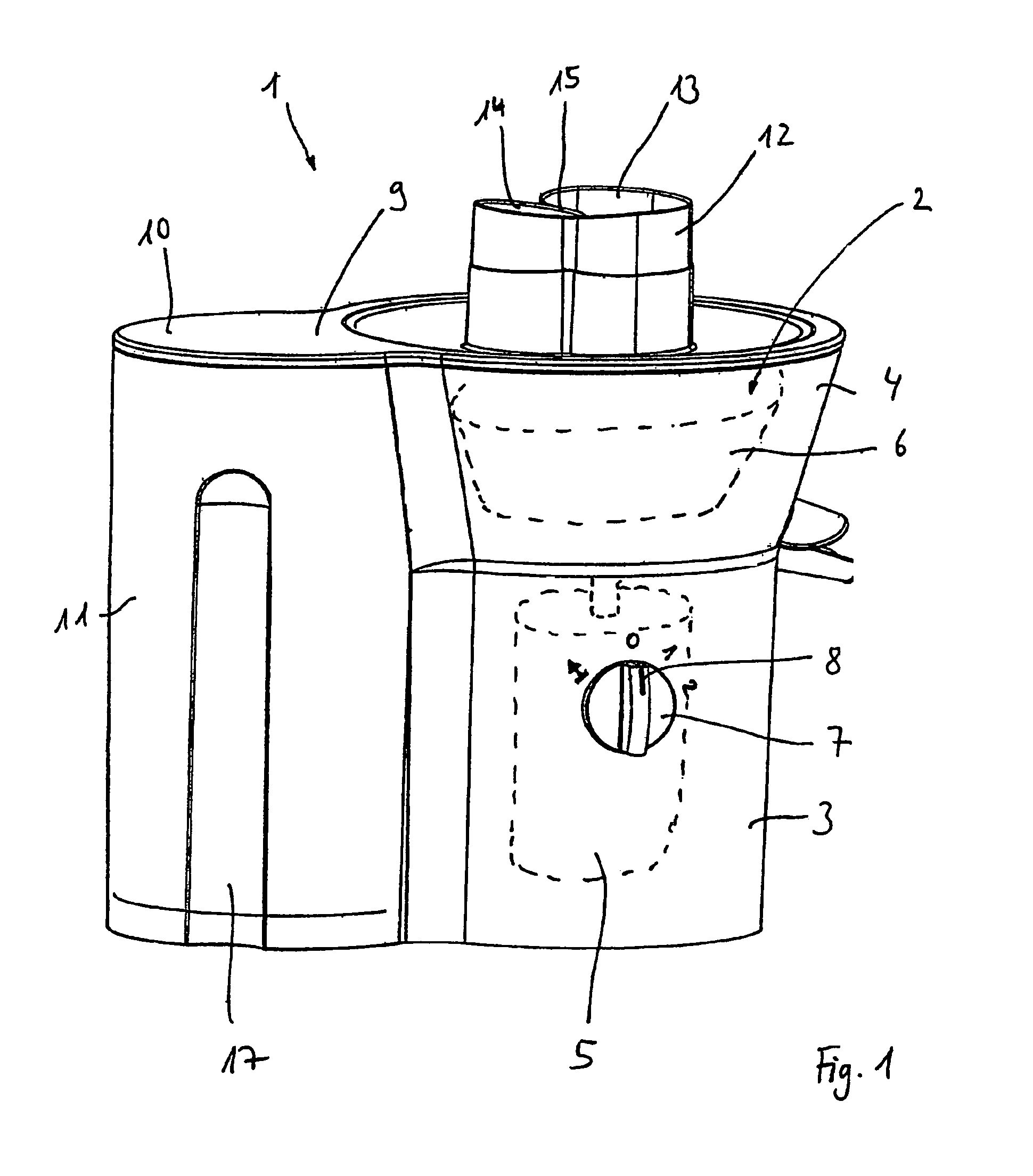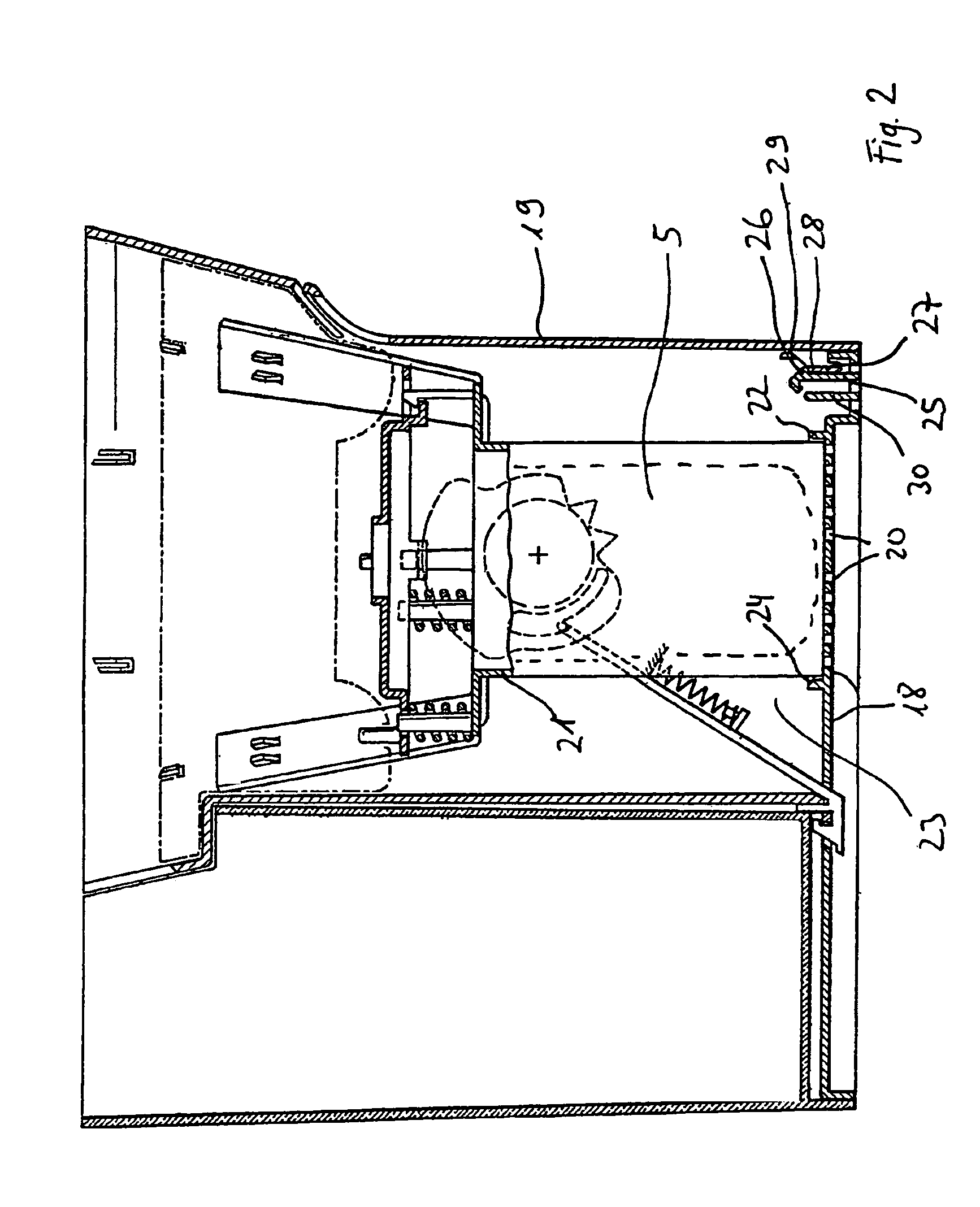Domestic appliance comprising detent elements and detent counter-elements
a technology of detent elements and counter-elements, which is applied in the direction of centrifuges, manufacturing tools, grain treatment, etc., can solve the problems of high cost of assembly and disassembly of latching devices, and achieve the effect of facilitating assembly and disassembly of housing sections
- Summary
- Abstract
- Description
- Claims
- Application Information
AI Technical Summary
Benefits of technology
Problems solved by technology
Method used
Image
Examples
Embodiment Construction
[0023]A juicer 1 shown in FIG. 1 has a housing 2 which comprises an essentially hollow cylindrical lower section 3 and a conically shaped upper section 4.
[0024]A drive motor 5 arranged in lower section 3, for a working tool 6 mounted rotatably in upper section 4, are only shown diagrammatically and in a concealed manner. The electrically operable drive motor 5 can be controlled by a rotatable actuating element 7. Actuating element 7 is designed as a rotary knob and is fitted on a front side wall of hollow cylindrical lower section 3. In the rotary position of actuating element 7 shown, a line marking 8 indicates switch position “0” in which the domestic appliance is put out of operation. In a switching position “I” of actuating element 7, located further to the right in the clockwise direction, juicer 1 is driven at a low speed, and in a switch position “II” of actuating element 7 located even further to the right, juice 1 is driven at a high speed. In a switch position “A” located ...
PUM
 Login to View More
Login to View More Abstract
Description
Claims
Application Information
 Login to View More
Login to View More - R&D
- Intellectual Property
- Life Sciences
- Materials
- Tech Scout
- Unparalleled Data Quality
- Higher Quality Content
- 60% Fewer Hallucinations
Browse by: Latest US Patents, China's latest patents, Technical Efficacy Thesaurus, Application Domain, Technology Topic, Popular Technical Reports.
© 2025 PatSnap. All rights reserved.Legal|Privacy policy|Modern Slavery Act Transparency Statement|Sitemap|About US| Contact US: help@patsnap.com



